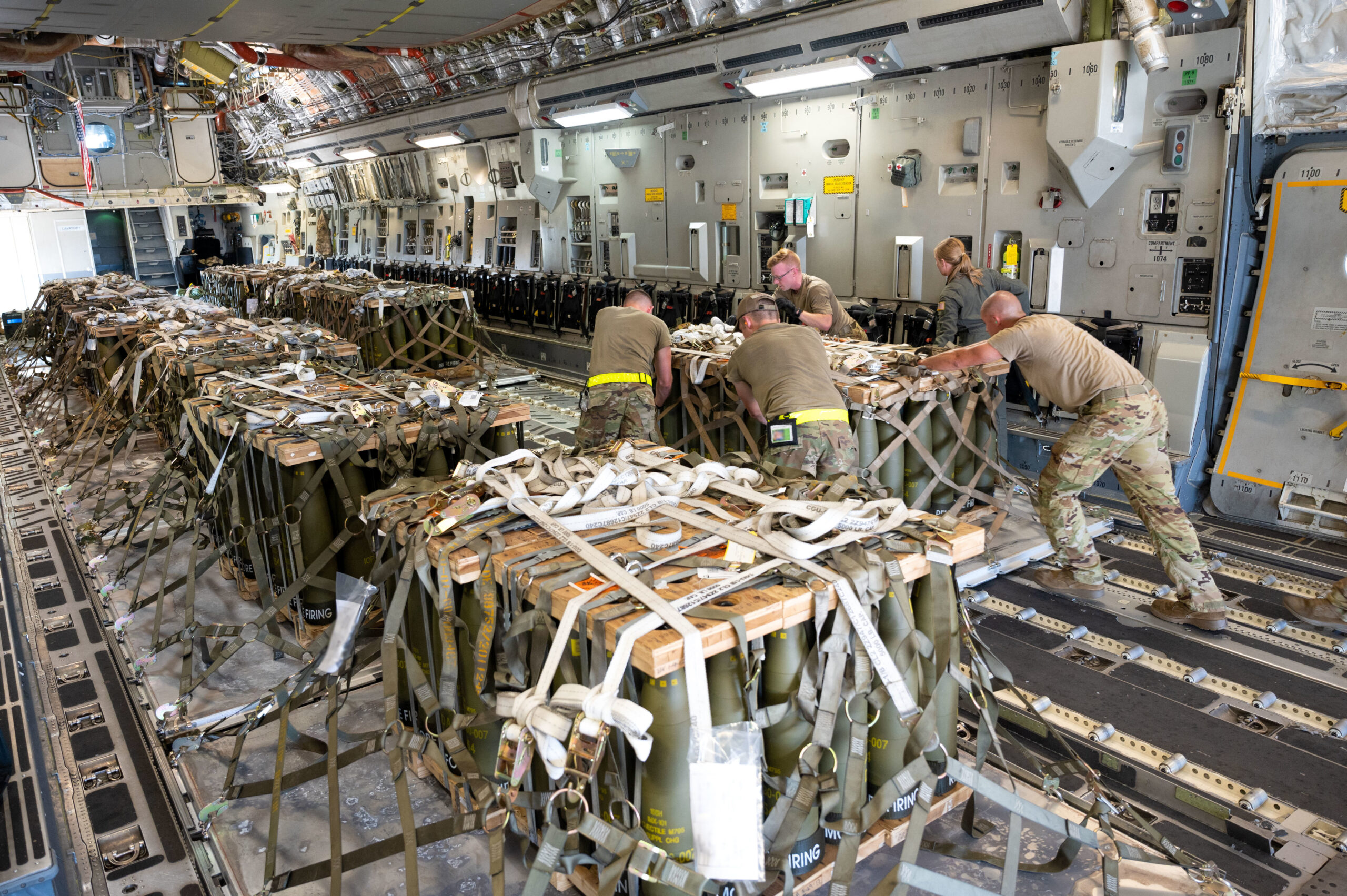

The Pentagon has not thoroughly monitored the transfer of some of the U.S.’s most advanced weapons and devices sent to Ukraine, an Inspector General report released Thursday found.
Pentagon Inspector General Robert P. Storch determined that serial number inventories were “delinquent” for more than $1 billion worth, of 59%, of high-value, technically advanced weapons the Pentagon is required to track through their “end-use.”
The report did not examine whether any of the weapons may have been ‘diverted’ from their intended use, through theft, misuse or loss.
The report also highlighted the DOD’s challenges to maintaining transparency and accountability for U.S. weapon sales through bureaucratic record-keeping while in an active combat zone.
Along with the difficulties of keeping accurate records in an active war zone, the report notes the Ukrainian military’s high consumption rate made proper record keeping difficult, as did the fact that there was “no safe method” to do inventory on the front lines and it was only possible at logistics and storage depots.
One official from the Office of Defense Cooperation-Ukraine told Pentagon investigators that once the pieces of equipment arrive in Ukraine “they are often transferred to the front lines within days for use in active combat.”
The IG report examined just the most valuable and potentially sensitive weapons sent to Ukraine, not the full spectrum of U.S. weapons delivered since February 2022. Instead, the report focuses on $1.699 billion in specialized weapons and devices sent since last June that fell under required “end-use monitoring.”
Those items include advanced air-to-air missiles, over 1,600 Stinger anti-aircraft systems, over 8,500 Javelin anti-armor systems, Switchblade drones and thousands of night vision devices, surveillance systems, thermal imagery systems, optics, and laser rangefinders.
Subscribe to Task & Purpose today. Get the latest military news and culture in your inbox daily.
The reporting requirements fall under the Arms Export Control Act and apply to defense articles and services sold, leased, or exported by the U.S. to foreign nations. The act requires the Pentagon to track not only where the equipment ends up, but that it is eventually used “in accordance with international law and consistent with any agreements or licenses under which such articles have been transferred,” according to the State Department.
Conventional battlefield weapons like artillery cannons, rifles, uniforms, trucks and ammunition are not subject to the same monitoring and were not covered in the report.
“The Ukrainians have offered unprecedented access to information as it relates to the equipment that we’re providing so they are fully understanding and supportive of our need to ensure that we can account for the items that are accountable,” Pentagon spokesperson Maj. Gen. Pat Ryder said at a press briefing Thursday.
Since Russia’s invasion began in February 2022, the U.S. has committed more than $44 billion in security assistance to Ukraine which has mostly been funded through supplemental appropriations. Fiscal year 2023 appropriations included $6 million for the DOD IG to review the department’s activities like security assistance sent to Ukraine.
Officials told the IG that “inventory accounting will likely continue to contain inaccuracies over time through additions, expenditures, and losses” of the monitored equipment “until hostilities in Ukraine end.” They also said that capturing as much information now will be essential to gain a complete picture post-conflict.
While the IG acknowledged that the DOD has improved its end-use monitoring since Russia’s full-scale invasion of Ukraine, the report also found that the department “did not fully comply” with requirements for “defense article accountability in a hostile environment.” One of the reasons, the IG included in its report, was because up until one month earlier, the DOD lacked procedures for doing so.
The IG also pointed to the limited number of personnel at logistics hubs in a partner nation and in Ukraine, movement restrictions for the monitoring personnel in Ukraine, and a lack of internal processes to validate information in their database.
The report notes inventory inaccuracies due to weapons sometimes added retroactively to the monitoring database and the fact that DOD personnel lacked insight into third-party transfers to Ukraine of U.S.-originated defense equipment.
The report’s focus did not include whether certain defense aid to Ukraine was diverted. However, the DOD’s OIG now has personnel stationed in Ukraine and its criminal investigative service is looking into allegations of criminal conduct with regard to U.S. security assistance, the report said.
“There remains no credible evidence of illicit diversion of U.S.-provided advanced conventional weapons from Ukraine,” Ryder said. “We do see some instances of Russia continuing to spread disinformation to the contrary, but the fact is, as we observe the Ukrainians employing these capabilities on the battlefield, we’re seeing them use them effectively.”
The latest on Task & Purpose
- What is the oldest military equipment still in use today?
- Arkansas Air Guard wing commander resigns over abortion policy, Governor says
- Marine Security Guard dies in Republic of the Congo
- How the military celebrates the New Year, according to combat veterans
- The history of Thompson “Tommy” guns at war